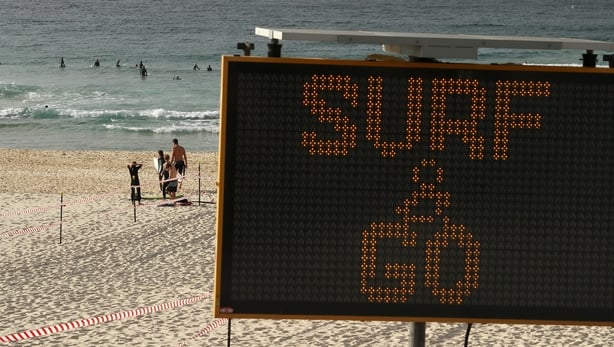Australia and New Zealand are working towards allowing travel between both countries, with the possibility of scrapping a mandatory two-week isolation.
Both countries have seen dramatic drops in the number of new cases being reported and are eager to inject some momentum into their economies.
The two governments have agreed to investigate a Trans-Tasman "travel bubble", which would allow flights between the two nations to resume.
What will the bubble involve?
The idea behind the "safe zone of travel" may mean people can travel between the two countries without needing to enter into periods of self-isolation, which the New Zealand Prime Minister sees as prohibitive.
"When we feel comfortable and confident that we both won't receive cases from Australia but equally that we don't export them, then that will be the time to move," Jacinda Ardern said.
On Monday, Ms Ardern joined Australia's Cabinet meeting to discuss reopening borders across the Tasman Sea following their respective success in containing the disease.
However, the travel bubble is still a long way off. Even in Australia alone, many states are currently banning internal cross-border travel.

Prime Minister Scott Morrison, who is expected to take a decision on easing federal restrictions on Friday, has said he sees a moment when citizens are able to travel across the country as indicative of when they could also travel to New Zealand.
Australia has reported 6,875 cases and 97 deaths. Its daily number of new cases has remained below 30 for more than two weeks.
Yesterday, New Zealand announced it had seen no new coronavirus cases for two days in a row, before reporting two today.
In total in New Zealand, there have been 21 deaths among 1,488 cases. Both countries have a virus mortality rate of around 1%.
The bubble will likely involve free movement between the two nations while initially prohibiting travel with other countries.
"There is still a lot of work to be done before we can progress an idea like that, but it's obviously being floated because of the benefits it would bring," Ms Ardern said.
What are the benefits?
The governments involved see the travel bubble as a way to reboot their economies.
The Australian economy is losing $4 billion AUD (€2.4bn) every week the shutdown continues, with GDP forecast to plunge 10% in the June quarter.
Australia’s main trading partner before the crisis was China, but New Zealand placed within the country’s top ten trading partners.
For New Zealand, the benefits are even more clear. Australia is the single biggest trading partner for its smaller neighbour.
The travel bubble will also bring tourism benefits and could also allow for leagues involving sports teams from both nations to resume.

Mr Morrison and Ms Ardern have indicated that international travel beyond the bubble is unlikely to start "for some time".
However, the bubble could be expanded to include Pacific island nations, a move that could improve the potential economic boosts and further the establishment of a growing sphere of influence.
While giving their respective economies a kickstart is undoubtedly appealing, managing contact tracing across the Tasman Sea will be vital to its success.
What are the risks?
If the measures are taken too soon, or are not implemented with enough care, both Australia and New Zealand risk further outbreaks and second peaks, which would undermine their positive efforts in controlling the virus thus far.
Parts of New Zealand and Australia have seen a slight easing of social distancing rules but police-enforced restrictions on large gatherings and non-essential travel remain.
Borders have been closed to non-citizens for more than a month and mandatory quarantines have been imposed on those returning home.
These early decisions from the island nations to close borders helped curb a rapid increase in new cases, but reopening them, even in a limited form, could have disastrous effects.

No timeframe for the "travel bubble" has been established, but both countries acknowledge that health, transport and other protocols need to be developed and met first, as they have not been unified in their response to the virus.
One of the main questions hanging over travel across the Tasman Sea is the use of contract tracing apps.
This week, the Australian government launched its contact tracing app, which uses Bluetooth to communicate with other nearby users of the app.
Meanwhile, New Zealand's Health Ministry has not yet launched its voluntary app.
It remains to be seen if the opt-in model adopted by both countries will be an effective strategy as the efficacy of app-based contact tracing dwindles significantly with a low market penetration.
A spike in new cases may have more significant long-term effects on the countries’ economies than further delaying the opening of borders, and lead to a rise in deaths that would certainly see the bubble burst.







